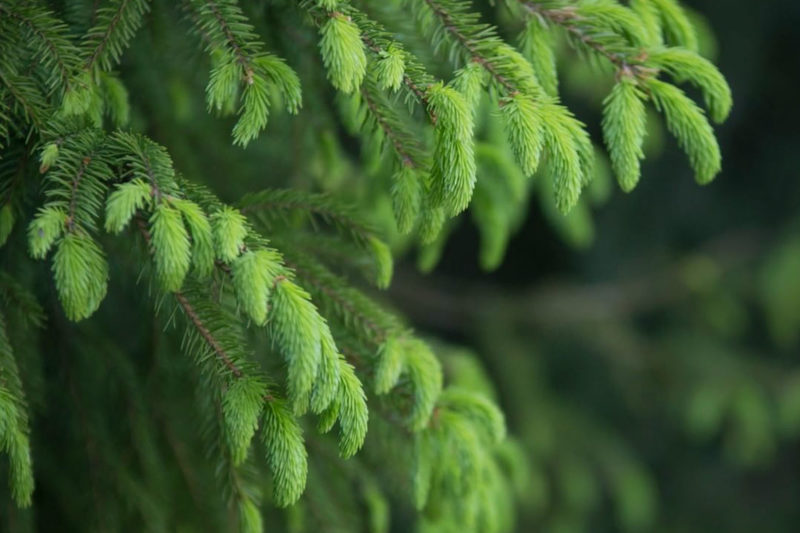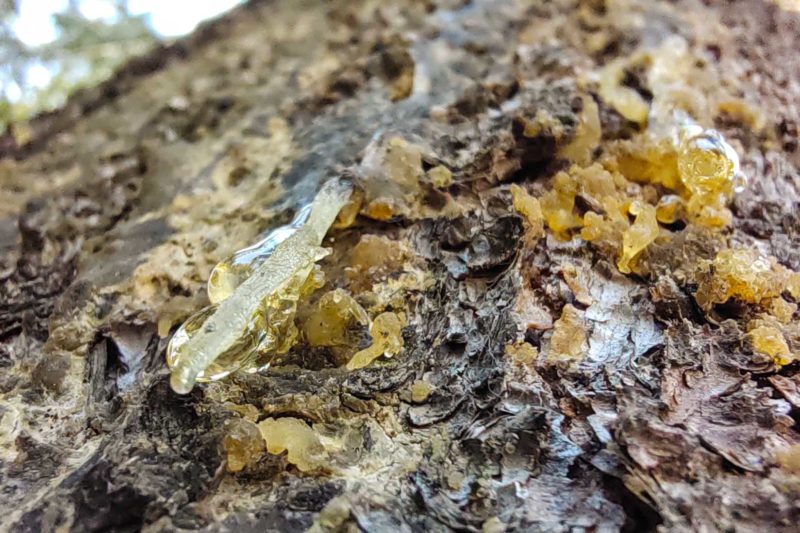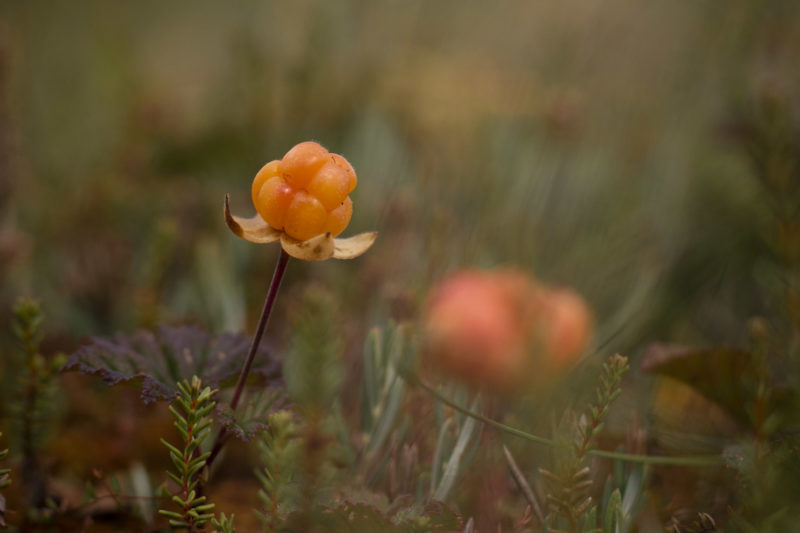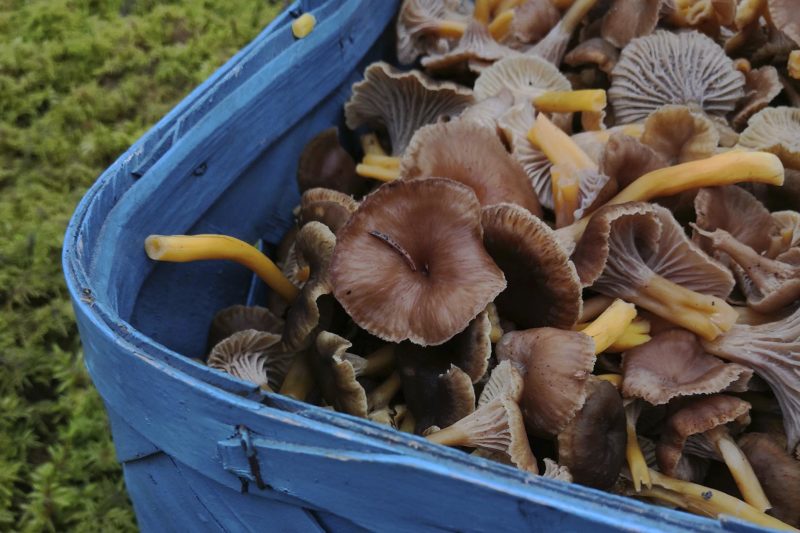
Finnish forestry is at the top of its tree, and gathering special natural produce and forest management go hand in hand.
Natural produce business is in line with the green transition and the new bioeconomy in Europe, though most of the harvest available in Finnish forests is left unutilized. Finland is the most extensively afforested country in Europe, but less than a tenth of the forest berry crop is picked. Over 80 million kilos of spruce sprouts could be gathered annually, but over 99 percent of this is left in the forest.
Rich in vitamin C, spruce sprouts can be made into juices, jams and powders, among other things. They are the pale green shoots that appear at the tips of spruce boughs every spring.
Over 90 percent of the late-summer crop of berries and mushrooms grow in areas classifiable as organic, but only a small share of these has been certified so far.

According to the Tulevaisuuskatsaus: Luonnontuotteet [Future Outlook: Natural Products] by the Finnish Forest Centre, there are 6.9 million hectares in Finland classifiable as organic gathering sites, though even more of them could fit the bill.
’We could easily double the organic gathering area. Clean forests could be a unique competition advantage for us,’ says Risto Mulari, corporate services specialist at the Finnish Forest Centre.
Great demand for organic produce
Organic produce is in high demand in Europe and Asia. In 2020, the value of export sales of organic natural produce was over EUR 60 million. This can be compared with the total value of food exports in 2021, which was EUR 1.8 thousand million. The main export destinations are China, Sweden, Estonia and Germany.
Food processing companies are interested in berries and mushrooms, but also in more unusual produce such as spruce sprouts, birch leaves, resin, chaga and birch sap.

These raw materials are used in chemical industry, foods, cosmetics and pharmaceuticals and for crafts, among other things. The most sought-after kinds are spruce sprouts and birch sap.
Wild bilberry is important for Finns both culturally and commercially, and a new inventory by Natural Resources Institute Finland shows that it has become more plentiful during the past 25 years. This is positive news, for a previous study had found that bilberry had degenerated since the 1950s.
Exports boosted by organic produce certificate
In order for produce to be called organic, it must be certified under a system that guarantees its origin and purity.
Finns normally consider it self-evident that forest produce is organic, but in Central Europe, a certificate is required, so getting one will boost exports.
If you’re buying resin, which has medical properties, from a nearby producer that you know, you’ll not not ask for a certificate. But the further the product travels from its origins, to Germany for example, the more information is needed.
’If you’re buying resin, which has medical properties, from a nearby producer that you know, you’ll not not ask for a certificate. But the further the product travels from its origins, to Germany for example, the more information is needed,’ says Mulari.

According to Mulari, organic certification has been a bit complicated in Finland, but work to make it easier is under way.
’Getting a certificate should not be too complicated or difficult,’ Mulari says.
Useful data on forest resources is available
The traditional everyone’s rights in Finland make it easy for Finns to support their household economy with forest produce. Everyone is allowed to pick berries, mushrooms and herbs, such as nettle and rosebay willowherb, in the forest.
Gathering spruce sprouts, birch leaves, resin, chaga and birch sap always requires a permission from the land owner.
Income from gathering natural produce is mainly exempt from taxation, unless it can be regarded as wages and where the annual income from the activity is below EUR 15,000. Detailed information on this is available from the tax administration.

Risto Mulari urges everyone to use the forest resources data that is freely available and helps in finding sites appropriate for gathering special produce.
’It would be good for forest owners to be aware that resin, chaga, or other special produce may be found in their forests. A good step forward would be to include natural produce in the forest plan,’ Mulari says.
Organic certification does not prevent forest management
The certification covers the produce to be gathered, but not trees grown for forestry. The certificate shows that the raw material was gathered in a forest where no prohibited methods, fertilizers or plant protection products have been used.
The area to be certified must be excluded from prohibited measures for three years. Examples of these measures are forest fertilization and prevention of root rot with urea. The latter can be achieved organically using an extract of the Phlebiopsis gigantea mushroom.

Forestry operations can be carried out in a certified forest, which can then be re-certified as an organic gathering site after three years. Few operations prohibited in organic certification are carried out in Finland, even though all operations carried out by private forest owners do not show up in the statistics.
For example, resin can be harvested by making a small nick in the tree trunk before the timber deal. That’ll give the forest owner a bit of extra income. Collecting resin will not affect the quality of log or fibre wood.
Forestry operations do not prevent the gathering of forest produce.
’For example, resin can be harvested by making a small nick in the tree trunk before the timber deal. That’ll give the forest owner a bit of extra income. Collecting resin will not affect the quality of log or fibre wood,’ says Mulari.
Natural produce give work to thousands
The natural produce business in Finland has expanded in recent years and is estimated to provide work for almost 3,000 people each year. The share of seasonal workers from abroad is significant in Finland. Last year, about 300 Thai berry pickers came to pick wild berries in Finland.
According to the Finnish Ministry of Economic Affairs and Employment, 500–1,000 berry pickers came to Finland from Ukraine in previous years. Some of them, however, were employed full time in agriculture and forestry and only picked berries part-time.
By May this year, about 25,000 Ukrainians had applied for international protection in Finland, and it is assumed that some of them may be interested in the extra income from gathering natural produce.
The total turnover of the natural produce business in 2020 was close on EUR 780 million.
English translation: Heli Mäntyranta
What can you earn by gathering natural produce
- Wild berries: Bilberry EUR 1–1.5/kg, crowberry EUR 1.4–1.6/kg and cloudberry EUR 10.5/kg.*
- Resin: EUR 50/kg. Assuming you have a one-hectare site and gather resin from 300 pines and 300 spruces, the total yield from pines will be 100 kg and from spruces, 27 kg. The total value of these will be EUR 6,350.
- Spruce sprouts: EUR 6–7/kg. One hectare of well-grown saplings will yield 500–800 kg of sprouts, bringing in EUR 3,000–5,600.
- Birch sap: EUR 0.40/l: One birch will yield 5 litres of sap per day. The tapping season lasts 15 days. 40 trees will thus yield 3,000 litres of sap, bringing in EUR 1,200.
- Implanted chaga EUR 40/kg: On a one-hectare site, 400 birches are implanted with four chaga each, three of which will thrive. Each implant will yield one kilo of chaga for eight years. After deduction of implanting costs, the income will be EUR 44,320. The birches with implants can ultimately be used as firewood or fibrewood.
Source: Riina Karvonen: Kuusenkerkistä koivunmahlaan. Lisäansioita omasta metsästä [Spruce sprouts and birch sap. Extra income from your forest]. Tapio 2022.
The calculations are indicative. The prices for special natural produce vary according to cleanness, quality and purpose of use.
*Source: Tulevaisuuden luonnontuoteala -raportti [Report on the future of the natural produce business]. Ministry of Economic Development and Employment of Finland 2021. The prices paid for berries to pickers may vary from one year to the next.

2 comments on “Organic produce may be found and gathered in practically all Finnish forests, but Central Europeans understandably want to see a certificate”
/ David Parker
Can I grow chaga in uk or does it require the winter coldness
/ M. Puolamaa
Hi,
why collecting chaga needs a permission from the forest owner, but not the collection of wood resin?